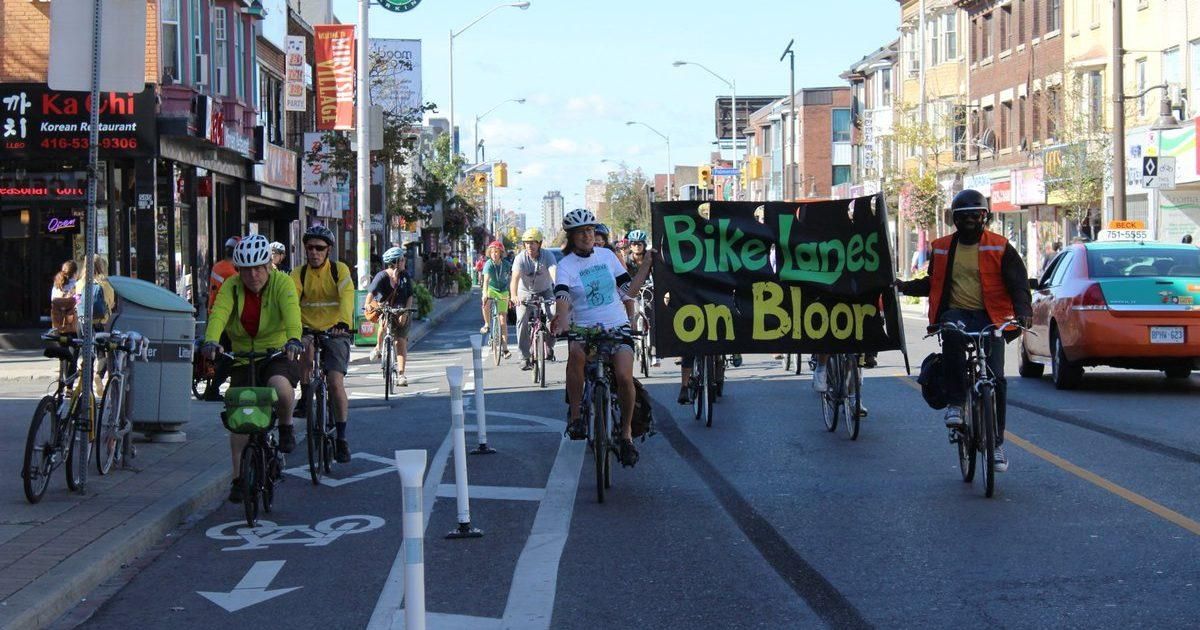Infra
Toronto City Council Explores Controversial Bike Lane Issue

Toronto’s bike lane saga continues, stirring debate and division among city officials and residents alike. The city council recently explored new strategies to counter the provincial government’s controversial proposal to remove bike lanes from key thoroughfares such as Bloor Street, Yonge Street, and University Avenue, becoming increasingly frustrated with the situation.
Councillors convened for discussions on Thursday, during which they agreed on several steps aimed at resisting the provincial march to eliminate the bike lanes. The motion, which garnered the backing of the majority of councillors, called for advocacy efforts to dissuade the Ford government from its fast-tracked legislation. It formally requested the provincial administration to reconsider its stance on the bike lanes and also sought legal reviews from city lawyers to explore the available options.
What came next only added to the heated climate: there’s talk about erecting signs along the affected roadways, stating the provincial government is responsible for the ensuing traffic chaos. The proposed signage, which would be positioned alongside the construction sites of the bike lanes slated for removal, aims to hold the Ford government accountable, displaying messages like “This road congestion and traffic delay is the result of Premier Ford’s Bill 212.”
Such tactics echo the Ford government’s previous efforts back in 2019, when they pushed gas stations to post stickers indicating the federal carbon tax’s contribution to fuel prices. An Ontario court later deemed those stickers unconstitutional, yet the city seems determined to pursue similar strategies to make their case known to the public.
The response from the provincial administration has been staunchly defensive. Premier Doug Ford reiterated his commitment to erasing the bike infrastructure, claiming it was necessary for traffic improvement, regardless of the data at hand. About $48 million has been estimated as the cost for the bike lane removal, along with considerable inconveniences to commuters during the time of construction. Toronto’s city administration stands to lose approximately $27 million already invested in constructing the bike lanes.
The provincial government has put forward promises to cover the expenses associated with the removal but has refrained from committing to other costs, like staff time and lost investments. Indeed, it’s clear the province is set on executing its plans, irrespective of the city council’s resistance. Councillors are apprehensive, with some questioning whether removing the bike lanes will truly alleviate congestion. Councillor Stephen Holyday voiced concerns, arguing against the possibility of worsening traffic issues with the proposed changes.
Simultaneously, city councillors have found themselves pushed by local constituents who express valid worries over traffic safety. Motorists’ aggressive behaviors on roads like Parkside Drive, for example, have led to numerous collisions, prompting city officials to propose new bike lanes to provide safer passage for cyclists. Recent reports claim hundreds of accidents occurred at Parkside Drive, coupled with calls for designated bike lanes to ease pedestrian safety concerns. With the city poised to allocate around $7.5 million for constructing bike lanes along Parkside, there’s notable support from city officials like Mayor Olivia Chow, who encourages transportation studies to prioritize safety.
While the council has made strides toward introducing new bike lanes, uncertainty looms over their efforts, especially with provincial legislation pushing the opposite agenda. “Just because the premier can doesn’t mean he should,” remarked Deputy Mayor Jennifer McKelvie, highlighting the strong community backing for pedestrian and cyclist safety measures. With local communities rallying for changes, the city can only tread carefully as it navigates the precarious political climate surrounding these transportation updates.
The tension is mirrored by the growing frustration of residents who’ve assembled petitions against the bike lane proposals. Local business owners recently rallied focusing on concerns about the effect of bike lanes on traffic flow and customer access, with the group “Balance on Bloor” spearheading the effort. Their visibility garnished significant attention from lawmakers; shortly after their push, Premier Ford announced plans to limit the construction of bike lanes provincewide, reiteratively mentioning their claims about traffic issues.
Among those who have echoed calls to eradicate bike lanes is Cody MacRae, one of the group’s founders, expressing deep dissatisfaction with the situation, claiming it’s inclined to hurt local businesses rather than help them. Despite their core principle of non-partisanship, the grassroots group is filled with numerous connections within the Progressive Conservative Party, effectively leveraging its influence to draw attention to their cause.
On the other side of the debate, advocates highlight the reduction of vehicular traffic and potential accidents as core objectives of maintaining bike lanes. For them, ensuring safety for cyclists and pedestrians takes precedence over the concerns raised by those opposing the initiative. With plans like city-backed safety improvements around Lake Shore Boulevard and Bloor Street also on the docket, advocates refuse to back down, arguing wholeheartedly for the bike lanes to create safer conditions.
City officials emphasized the urgency for collective action as the debate progresses to shaped laws. The complex nuances of urban infrastructure choices have surfaced the challenge of balancing the needs of various groups without marginalizing pedestrian and cyclist safety.
Chow and other councillors are increasingly insistent on proving to the provincial government just how integral these bike lanes are for the community, emphasizing the necessity for public discussions on all sides. The complexity of the situation is indicative not merely of bureaucratic wrangling but of responses reflecting two conflicting ideologies on urban transport.
At this junction, the city council’s efforts to halt the potential eradication of bike lanes remains uncertain—it rests significantly on the mandate from the provincial legislation outlining their removal. While the bureaucratic chess game continues, with both sides standing firm in their beliefs, it’s the everyday Toronto resident who remains caught up amid the crossfire, reflecting on the future of their city’s transportation infrastructure.
What’s next for Toronto’s bike lanes? Can city officials craft a stable middle ground with provincial authorities? Games of strategy are expected to dominate as the city pits itself against the provincial government on the future of urban cycling space, showcasing the passionate debates surrounding transport infrastructure and city planning still prevalent today.








